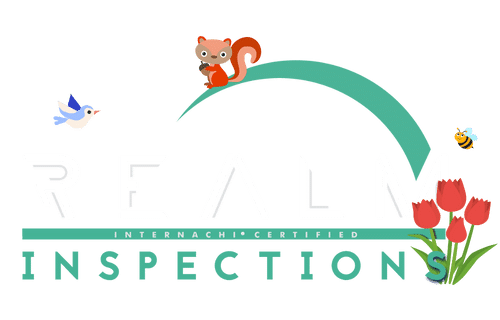When Should You Call a Home Inspector?
When Should You Call a Home Inspector?
When should you call a home inspector? Most people assume home inspections are only necessary when buying a house, but that’s far from the truth. There are several situations where hiring a certified home inspector can save you thousands—whether you’re selling, dealing with unexpected issues, or just want peace of mind.
In Fuquay-Varina and Wake County, homeowners and buyers often face unique property challenges, from storm damage to outdated construction. Let’s break down the key times when scheduling a home inspection is the best decision for your home and wallet.
1. When Buying a Home (No Brainer!)
If you’re buying a home, calling a home inspector is a must. It’s the only way to get a detailed report on the property’s condition before you commit.
A home inspection helps uncover:
- Hidden foundation issues (cracks, settling, water damage)
- Electrical hazards (outdated wiring, improper installations)
- Roof problems (leaks, missing shingles, poor ventilation)
- Plumbing leaks (potential for water damage and mold)
Skipping an inspection could leave you with costly surprises. Would you rather spend $500 now or $15,000 later on foundation repairs?
Check out my InterNACHI certification to see why professional experience matters.
2. When Selling Your Home (Pre-Listing Inspections)
If you’re planning to sell, a pre-listing home inspection can help you get ahead of potential buyer concerns.
- Find and fix problems before buyers do.
- Strengthen your negotiating power.
- Avoid last-minute surprises that could delay closing.
Buyers appreciate transparency. If you have a clean inspection report, your home instantly becomes more attractive in a competitive market.
Learn more about pre-listing home inspections.
3. After Storm Damage or Natural Disasters
North Carolina homes see their fair share of storms, hurricanes, and severe weather. If your home has taken a beating, call a home inspector to check for damage—even if it’s not immediately visible.
A post-storm inspection can reveal:
- Roof damage (shingles, flashing, leaks)
- Water intrusion (basements, crawl spaces, siding)
- Structural shifts (wind and flood-related foundation movement)
Many homeowners assume their insurance company will fully assess storm damage, but **not all insurance adjusters work in your best interest**. Here’s the key difference between adjuster types:
Understanding Insurance Adjusters
- W-2 Insurance Adjuster: This is the adjuster employed directly by your insurance company. Their primary responsibility is to protect the company’s bottom line, meaning they may minimize your claim payout. When you call in a claim with your insurance carrier, this is usually who they send out. Keep reading…
- Independent (Third-Party) Adjuster: These adjusters are contracted by the insurance company, but they don’t work directly for them. While they have more flexibility than a W-2 adjuster, they’re still hired by your insurer and often follow company policies that may not favor the homeowner.
- Public Adjuster (a homeowner’s best friend): A licensed professional who works for YOU, not the insurance company. They advocate on your behalf to ensure you get the absolute maximum payout for covered damages. Public adjusters work in tandem with home inspectors to document all storm-related issues and present a stronger case to your insurance provider.
If you’ve had storm damage, a home inspector and a public adjuster together can provide a thorough, unbiased assessment and help you avoid getting shortchanged on your claim.
Learn more about finding a licensed public adjuster here.
4. If You Notice Unexplained Issues in Your Home
Ever noticed doors that won’t close properly? A musty smell that won’t go away? Cracks forming where they weren’t before?
These are often signs of hidden structural or moisture problems that need attention. Instead of ignoring them (or Googling “why does my house smell weird?”), call a home inspector.
5. Before Major Renovations
If you’re planning a big remodel, get a home inspection first. An inspector can assess your home’s structure, electrical system, and plumbing to prevent surprises mid-project.
- Avoid unpermitted renovations that could violate building codes.
- Ensure new additions meet NC building standards.
- Identify potential problems before they derail your project.
See how phase inspections help during construction.
6. If You’re a Landlord or Property Investor
Rental properties and investment homes require periodic inspections to protect your bottom line.
- Unreported plumbing leaks (can lead to mold and structural damage)
- DIY electrical work that isn’t up to code
- Hidden roof or HVAC issues that worsen over time
Routine inspections help keep tenants safe and ensure small problems don’t turn into big expenses.
7. When Buying a Brand-New Home
New construction homes aren’t perfect. In fact, they often have more defects than older homes because they haven’t stood the test of time.
Common issues in brand-new homes:
- Incorrect framing and structural defects
- Plumbing and electrical installation errors
- HVAC and insulation problems leading to poor energy efficiency
See why new construction inspections matter.
Final Thoughts: When Should You Call a Home Inspector?
If you own or are buying a home, there’s never a bad time to schedule a home inspection. Whether you’re dealing with storm damage, planning a remodel, or just want peace of mind, a professional inspection helps catch problems before they turn into expensive repairs.
Need a professional home inspection in Fuquay-Varina or Wake County? Book with Realm Inspections today.
